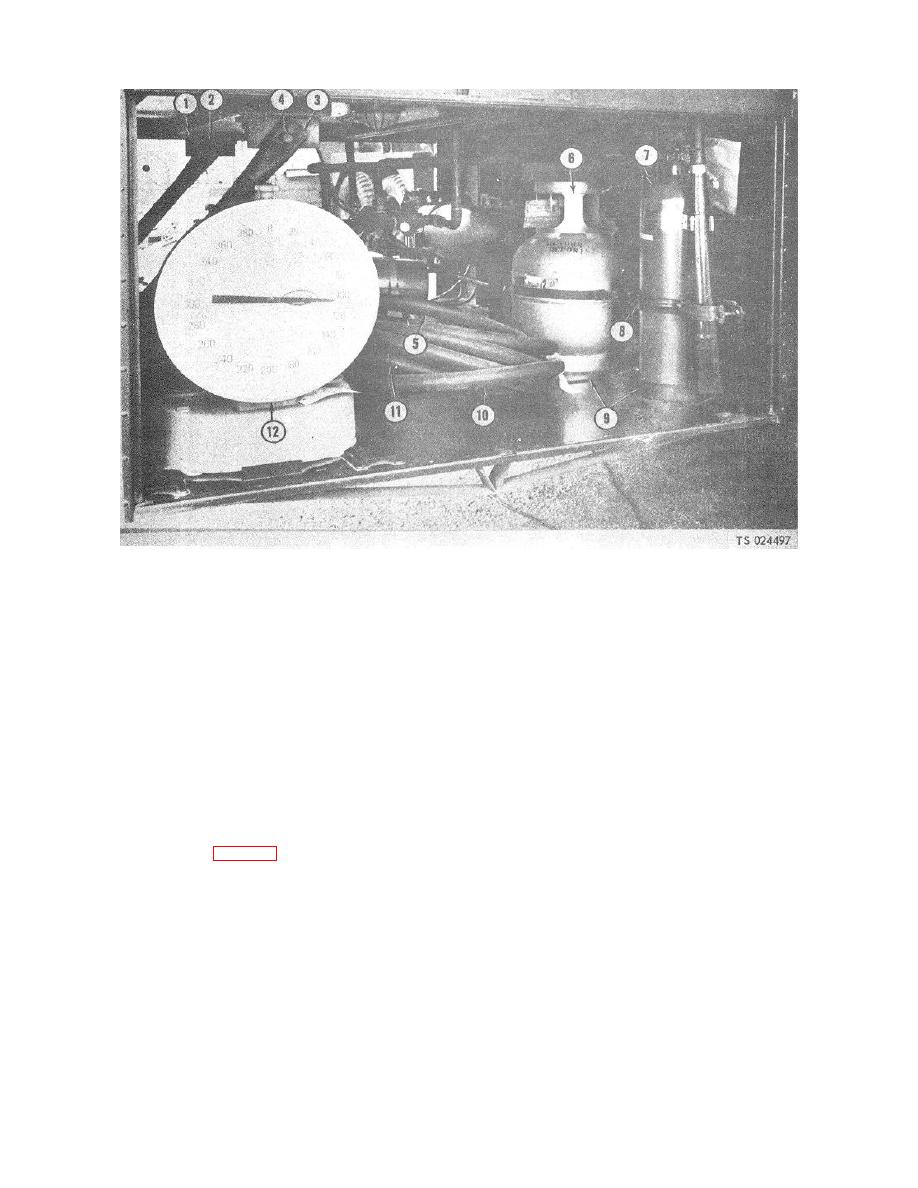
TM 5-3655-210-12
1. Bracket
4. Capscrew
7. Fire extinguisher
10. Transfer hose (liquid)
2. Nut
5. Transfer hose (vapor)
8. Quick release clamp
11. Cylinder filling hoses
3. Brace
6. Freon tank
9. Holder
12. Scale
Figure 2-19 .
Storage compartment, face view (ser. nos . L-1666-T through L-1668-T) .
NOTE
dioxide. Be alert for the indications outlined in (b) and
(c) above, several minutes before this time has elapsed.
If pumping is continued after capacity is
Stop the pump immediately when either indication is
reached, liquid carbon dioxide will enter
observed.
the vapor equalizing line instead of
vaporous carbon dioxide. The cold liquid
(2) Checking for Overfilling.' It is important that the
in the vapor equalizing line will cause that
level of the liquid carbon dioxide inside the pressure
line to accumulate frost, and indicate that
vessel be kept no higher than the bottom of the vapor
complete filling has been obtained.
(c) Pressure Gage. Another method of
equalizing line dip tube. After complete filling of the
pressure vessel and after the hoses have been
determining when the tank is full is to observe the
disconnected, open the vapor equalizing line valve (23,
pressure gages (1 and 3, fig. 2-4). As long as liquid
fig.
2-8) slightly to discharge carbon dioxide to
enters the bottom of the vessel and vapor returns
atmosphere. If the discharge is clear or only slightly
through the vapor equalizing line, the pressure will
foggy, the tank has not been overfilled. However, if the
remain approximately constant. As soon as the liquid
discharge is a dense, white cloud containing particles of
level reaches the vapor equalizing dip tube and liquid is
dry ice, the liquid level in the tank is too high. To
forced into the vapor equalizing line, the pressure will
remedy this, carbon dioxide discharge from the vapor
suddenly begin to rise.
(d) Amount of Carbon Dioxide Required to Fill
equalizing line connection should be allowed to continue
slowly until the dense white discharge changes to a
Tank. If the pumping rate is known, it can be
clean or blue fog discharge.
determined from the liquid level gage reading before
pumping is started how much carbon dioxide will be
required to fill the tank and approximately how long it
will take to pump this amount of carbon
2-18


